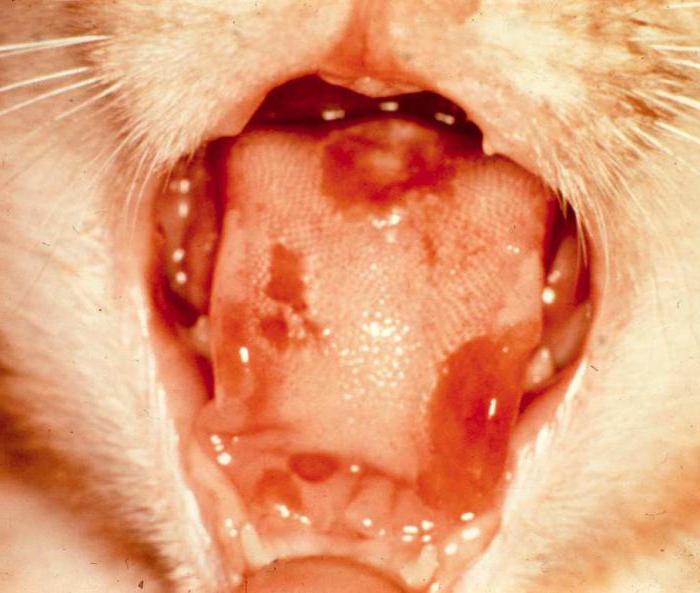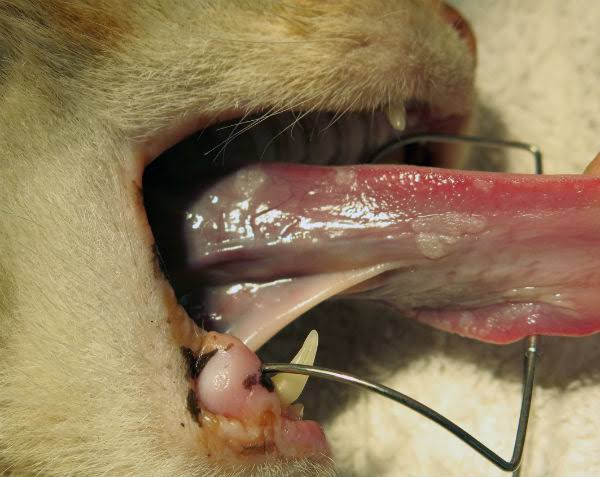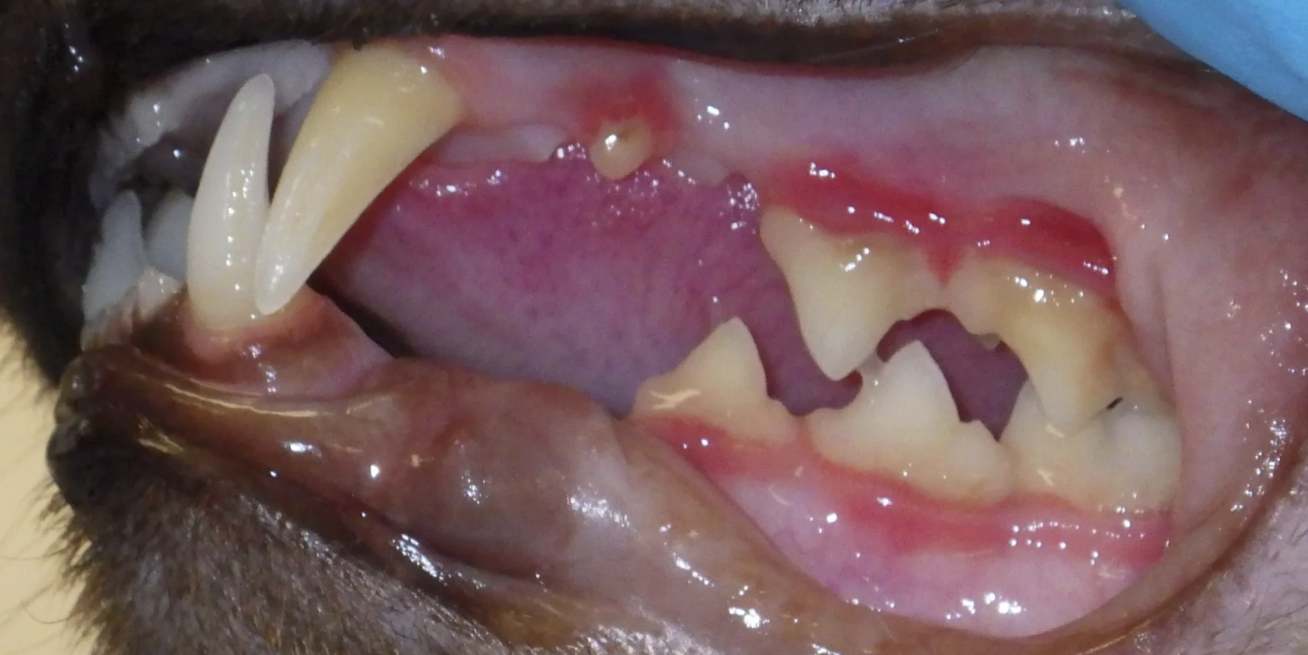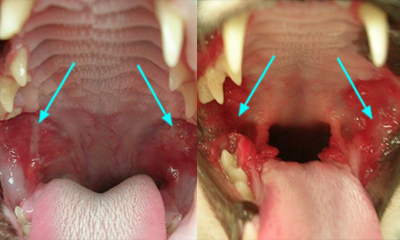Symptoms of Stomatitis in Cats (with Photos)
Typically, the symptoms of stomatitis are clearly noticeable.
To prevent the development of feline stomatitis, pay attention to a combination of certain symptoms that should alert you and prompt a visit to your veterinarian.
- ✔ Your pet eats less or even stops eating due to pain in the gums and tongue.
- ✔ Rejection mainly of dry food like kibble.
- ✔ Red and inflamed gums that may even bleed (gingivitis).
- ✔ Redness in the mouth.
- ✔ Dental plaque.
- ✔ Bad breath (halitosis).
- ✔ Excessive salivation (ptyalism).
- ✔ Tongue kept outside the mouth.
- ✔ Frequent rubbing of the face with the paw.
- ✔ Enlargement of the lymph nodes located under the lower jaw, involved in fighting infections.
- ✔ Weight loss.
- ✔ Lack of energy, especially for grooming, giving a dirty appearance.
- ✔ Tendency to isolate.
- ✔ Aggressiveness and frequent yawning.
- ✔ Tooth loss.
Missing a few teeth?
Symptoms of ulcerative stomatitis
- Copious salivation (drooling)
- Halitosis (bad breath)
- Redness of the gums and mucous membranes in the mouth
- Loss of appetite or refusal to eat
- Whitish plaque on the tongue, along with ulcerative lesions on the gingival mucosa and the inner surfaces of the upper and lower lips
- Inflammation of the corners of the mouth (sometimes present)
Symptoms of gangrenous inflammation
▶ Gangrenous stomatitis in a cat (Click to view)

Symptoms of papillomatous stomatitis
After 6–12 weeks, the warts usually disappear on their own. However, if the papillomas do not regress, appropriate treatment should be prescribed.
▶ Feline viral papillomatosis (Click to view)

Veterinary Diagnosis
Stomatitis is diagnosed by elimination to determine the origin of the problem.
Your cat will undergo a comprehensive examination, often including blood biochemistry, a urine test, and other tests to check for the absence of FIV (Feline Immunodeficiency Virus) or FeLV (Feline Leukemia Virus).
The veterinarian must identify the causes of stomatitis and the factors that worsen it in order to propose an appropriate and effective treatment.
To detect calicivirus, a PCR test is performed using an oral swab. If a tumor is suspected, a biopsy will be conducted.
Finally, an X-ray of the oral cavity will help identify dental lesions and assess the stage of stomatitis progression.
Your veterinarian will determine the necessary investigations based on your cat’s condition and medical history.

